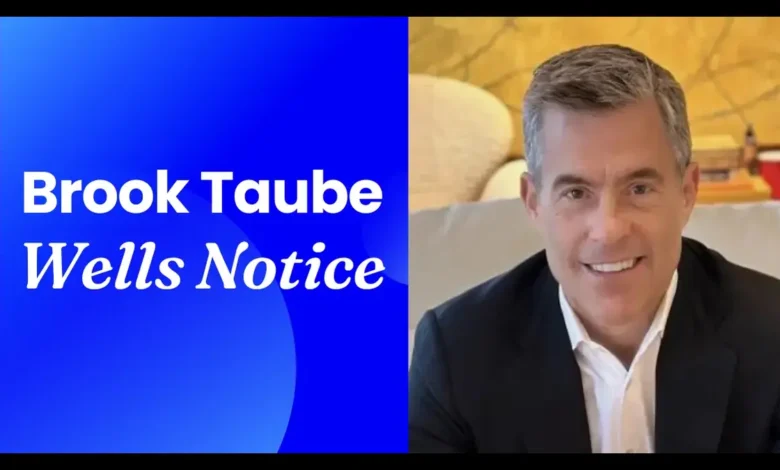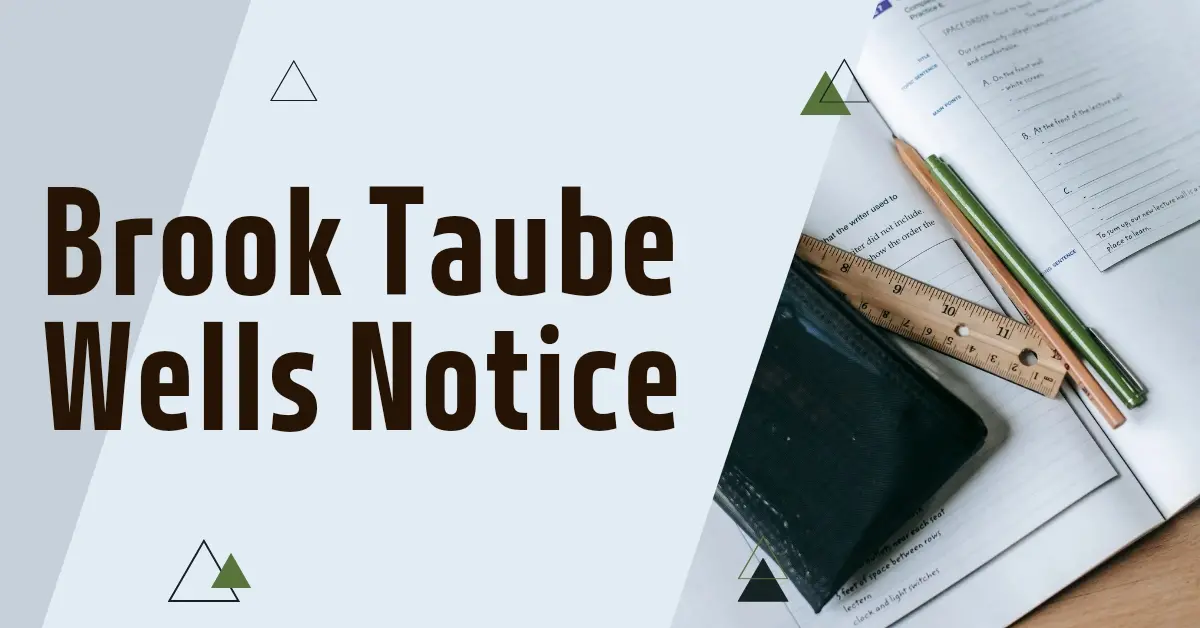Understanding Brook Taube Wells Notice: A Comprehensive Guide

Introduction
Brook Taube Wells Notice is a crucial concept in the legal and financial world, particularly in the United States. It’s a notice sent by the Securities and Exchange Commission (SEC) to individuals or entities under investigation for potential securities violations. This article delves into the meaning, implications, and procedures related to the Brook Taube Wells Notice, providing a detailed understanding for legal professionals and individuals facing such investigations.
What is Brook Taube Wells’s Notice?
A Brook Taube Wells Notice is a formal notification issued by the SEC’s Division of Enforcement, informing the recipient that they are under investigation for possible securities violations. The notice is named after the 1971 case of Brook v. SEC, which established the requirements for such notifications. The notice typically outlines the alleged violations, the relevant laws and regulations, and the potential consequences of the investigation.
The Brook Taube Wells Notice is a critical step in the SEC’s enforcement process, as it allows the recipient to respond to the allegations and present their case before formal charges are filed. The notice is usually sent to individuals or entities suspected of engaging in fraudulent activities, such as:
- Insider trading
- Ponzi schemes
- Accounting fraud
- Securities fraud
- Market manipulation
Purpose and Significance

The primary purpose of the Brook Taube Wells Notice is to inform the recipient of the investigation’s scope, the alleged violations, and the potential penalties. The notice also serves as a warning, allowing the recipient to take corrective action or respond to the allegations before the SEC takes further action.
Receiving a Brook Taube Wells Notice is a serious matter, as it indicates that the SEC has gathered sufficient evidence to warrant a formal investigation. The notice can have significant implications for individuals and businesses, including:
- Reputation damage
- Financial penalties
- Legal action
- Criminal prosecution
- Regulatory sanctions
- Loss of licenses or certifications
- Disbarment or suspension
Procedures and Timeline
The SEC’s Division of Enforcement typically follows a standard procedure when issuing a Brook Taube Wells Notice:
- Investigation: The SEC conducts an investigation, gathering evidence and interviewing witnesses.
- Notice issuance: The Division of Enforcement sends the Brook Taube Wells Notice to the recipient, outlining the alleged violations and potential penalties.
- Response: The recipient has a specified timeframe (usually 30-60 days) to respond to the notice, presenting their case and any relevant evidence.
- Review: The SEC reviews the response and may request additional information or evidence.
- Wells submission: The recipient may submit a Wells submission, a detailed written response addressing the allegations and providing mitigating circumstances.
- SEC decision: The SEC decides whether to pursue enforcement action, dismiss the case, or settle the matter.
- Enforcement action: If the SEC decides to pursue enforcement action, it may file a complaint in federal court or initiate administrative proceedings.
Responding to a Brook Taube Wells Notice
Receiving a Brook Taube Wells Notice requires prompt attention and action. Recipients should:
- Seek legal counsel: Engage an experienced securities attorney to guide the response process.
- Review the notice: Carefully examine the notice, ensuring an understanding of the alleged violations and potential penalties.
- Gather evidence: Collect relevant documents and information to support the response.
- Respond timely: Submit a thorough and well-reasoned response within the specified timeframe.
- Cooperate with the SEC: Be transparent and cooperative throughout the investigation.
- Prepare for a Wells submission: If necessary, prepare a detailed written response addressing the allegations and providing mitigating circumstances.
Best Practices for Responding to a Brook Taube Wells Notice
- Act promptly: Respond quickly to the notice to demonstrate cooperation and minimize potential penalties.
- Seek expert legal counsel: Engage an experienced securities attorney to guide the response process.
- Be thorough and detailed: Provide a comprehensive response, addressing each allegation and providing supporting evidence.
- Cooperate fully: Be transparent and cooperative throughout the investigation.
- Maintain records: Keep detailed records of all interactions with the SEC and related documents.
Defending Against a Brook Taube Wells Notice
Receiving a Brook Taube Wells Notice can be a daunting experience, but it’s essential to mount a robust defence to protect your rights and interests. Here are some key strategies to consider:
- Engage Experienced Counsel
Retain a seasoned securities attorney who has expertise in SEC enforcement matters. They will help you navigate the process, respond to the notice, and develop an effective defence strategy.
- Conduct a Thorough Investigation
Gather all relevant documents, records, and evidence to support your case. This may include financial records, emails, phone records, and witness statements.
- Develop a Strong Response
Craft a comprehensive and compelling response to the notice, addressing each allegation and providing evidence to refute or mitigate the claims.
- Cooperate with the SEC
Be transparent and cooperative throughout the investigation. This can demonstrate good faith and potentially reduce penalties.
- Consider a Wells Submission
If appropriate, prepare a detailed Wells submission, which will allow you to present your case and arguments clearly and persuasively.
Potential Outcomes
The SEC’s decision following a Brook Taube Wells Notice can have significant consequences. Possible outcomes include:
- No Action
The SEC may decide to take no further action, ending the investigation.
- Settlement
The SEC and the recipient may agree to a settlement, including penalties, fines, and other sanctions.
- Enforcement Action
The SEC may pursue formal enforcement action, including administrative proceedings or federal court litigation.
- Criminal Referral
In severe cases, the SEC may refer the matter to the Department of Justice for criminal prosecution.
Best Practices for Avoiding a Brook Taube Wells Notice
While receiving a Brook Taube Wells Notice can be a serious matter, there are steps you can take to minimize the risk of an SEC investigation:
- Comply with Securities Laws and Regulations
Ensure strict compliance with all applicable securities laws, regulations, and rules.
- Implement Effective Compliance Programs
Establish robust compliance programs, including training, monitoring, and reporting mechanisms.
- Conduct Regular Audits and Reviews
Perform regular audits and reviews to identify and address potential issues before they escalate.
- Foster a Culture of Compliance
Encourage a culture of compliance within your organization, emphasizing ethical behaviour and transparency.
Conclusion
A Brook Taube Wells Notice is a serious matter requiring prompt attention and action. By understanding the notice’s purpose, procedures, and implications, you can mount an effective defence and potentially mitigate penalties. Remember to engage experienced counsel, conduct a thorough investigation, develop a strong response, and cooperate with the SEC. By following best practices and prioritizing compliance, you can reduce the risk of an SEC investigation and protect your reputation and interests.





